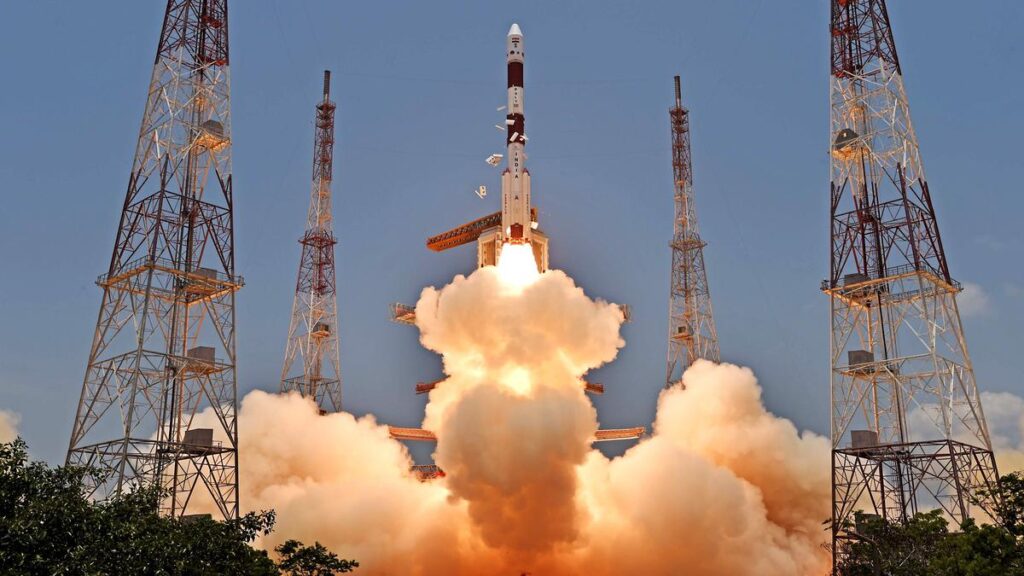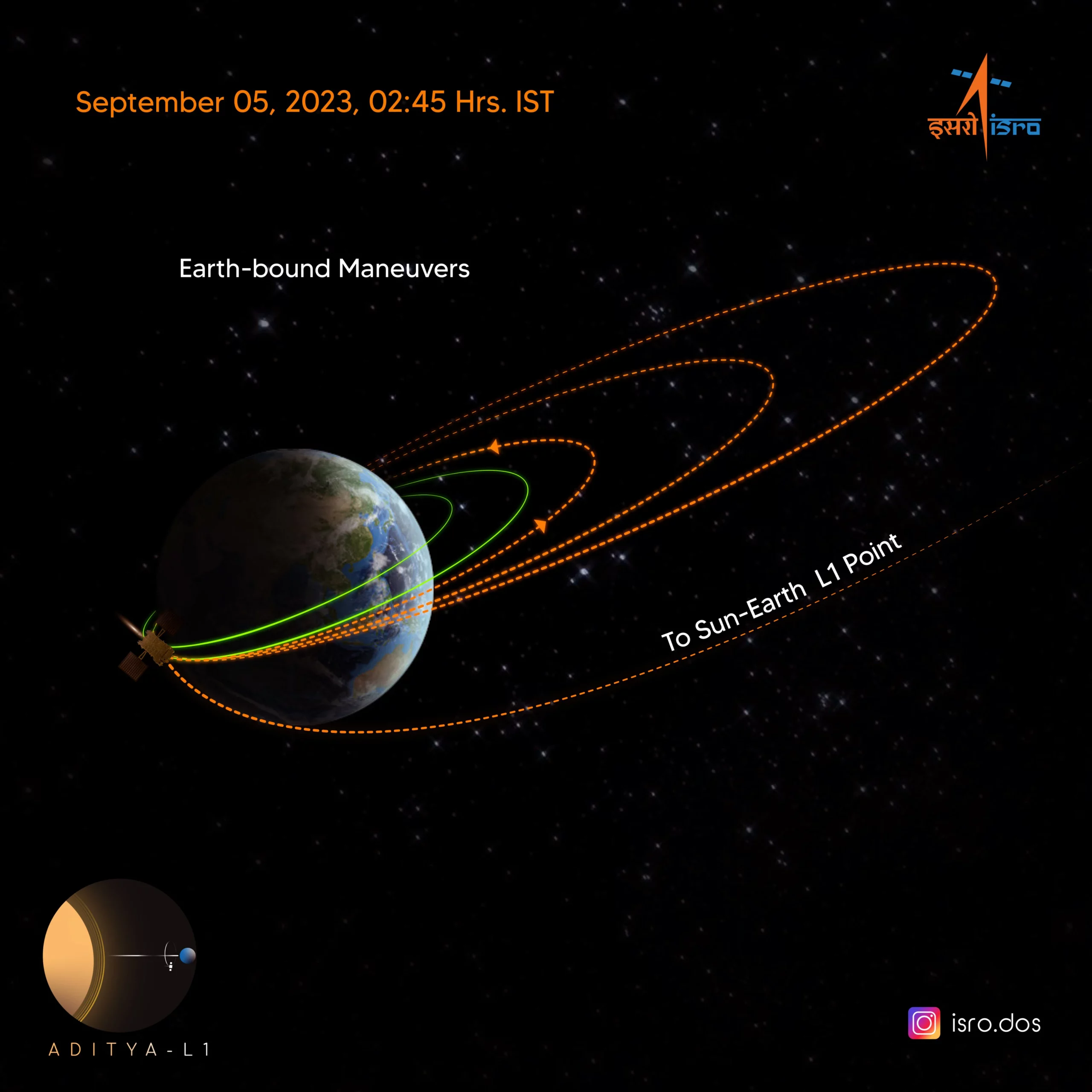The Aditya-L1 rocket was launched successfully from Satish Dhawan Space Centre, Sriharikota, Andhra Pradesh on September 2. It will travel 1.5 million km away from the Earth – can you believe that is just 1% of the distance between the Earth and the Sun? According to ISRO, it will take four months for Aditya-L1 to travel this distance. The spacecraft will stay in Earth’s orbit for the first 16 days before heading towards the Sun. During this time, it will go through 5 manoeuvres to gain the necessary velocity (speed) for its journey. Once Aditya-LI reaches this “parking spot”, it would be in the Sun’s orbit so would need very little fuel to operate and will be able to watch the Sun constantly and carry out scientific studies. After an hour and four minutes of flight-time, the ISRO declared it “mission successful”. Aditya-L1 will allow scientists to observe solar activity, solar wind and solar flares, and their effect on Earth, and will help improve our scientific understanding of the Sun.

Also read about, India Scripts Lunar History
DID YOU KNOW?
L1 stands for Lagrange point 1 – the exact place between Sun and Earth where the spacecraft is heading. A Lagrange point is a spot where the gravitational forces of two large objects – such as the Sun and the Earth – cancel each other out, allowing a spacecraft to “hover”.
India’s first space-based mission to study the solar system’s biggest object is named after Surya – the Hindu god of Sun who is also known as Aditya.

Previous Missions To The Sun
If Aditya-L1 is successful, India will join the select group of countries that are already studying the Sun.
Japan was the first to launch a mission in 1981 to study solar flares.
Since the 1990s, NASA and the European Space Agency (“ESA”) have been watching the Sun.
In February 2020, NASA and ESA jointly launched a Solar Orbiter that is studying the Sun from close quarters and gathering important data.
In 2021, NASA’s spacecraft called Parker Solar Probe created history by becoming the first to fly through corona, the outer atmosphere of the Sun.

Watch full video on, The Coronation of Britain’s King Charles

